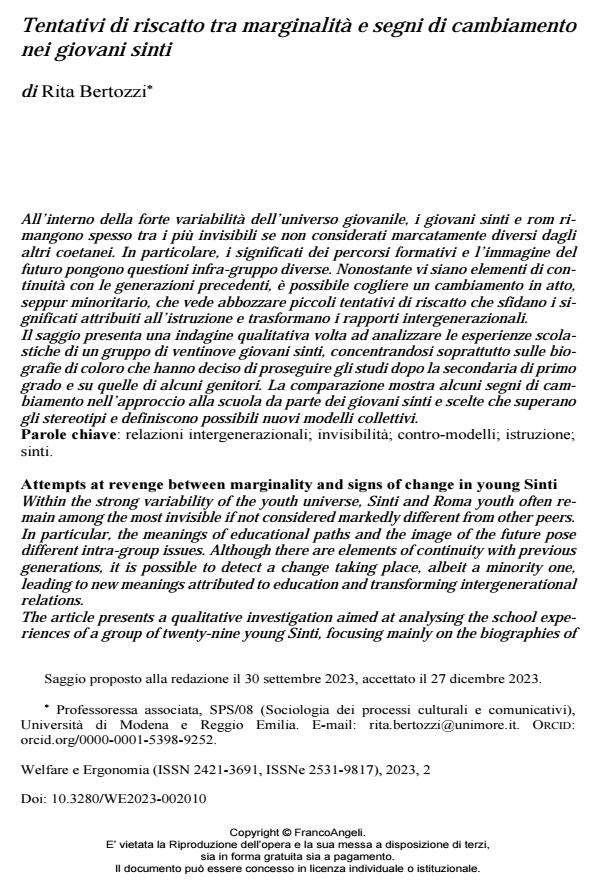Attempts at revenge between marginality and signs of change in young Sinti
Journal title WELFARE E ERGONOMIA
Author/s Rita Bertozzi
Publishing Year 2024 Issue 2023/2
Language Italian Pages 15 P. 135-149 File size 236 KB
DOI 10.3280/WE2023-002010
DOI is like a bar code for intellectual property: to have more infomation
click here
Below, you can see the article first page
If you want to buy this article in PDF format, you can do it, following the instructions to buy download credits

FrancoAngeli is member of Publishers International Linking Association, Inc (PILA), a not-for-profit association which run the CrossRef service enabling links to and from online scholarly content.
Within the strong variability of the youth universe, Sinti and Roma youth often remain among the most invisible if not considered markedly different from other peers. In particular, the meanings of educational paths and the image of the future pose different intra-group issues. Although there are elements of continuity with previous generations, it is possible to detect a change taking place, albeit a minority one, leading to new meanings attributed to education and transforming intergenerational relations. The article presents a qualitative investigation aimed at analysing the school experiences of a group of twenty-nine young Sinti, focusing mainly on the bi-ographies of those who decided to continue their studies after secondary school and on those of some of parents. The comparison shows some signs of change in the approach to school by young Sinti and choices that overcome stereotypes and define possible new collective models.
Keywords: sinti; education; counter-models; invisibility; intergenerational relations.
Rita Bertozzi, Tentativi di riscatto tra marginalità e segni di cambiamento nei giovani sinti in "WELFARE E ERGONOMIA" 2/2023, pp 135-149, DOI: 10.3280/WE2023-002010